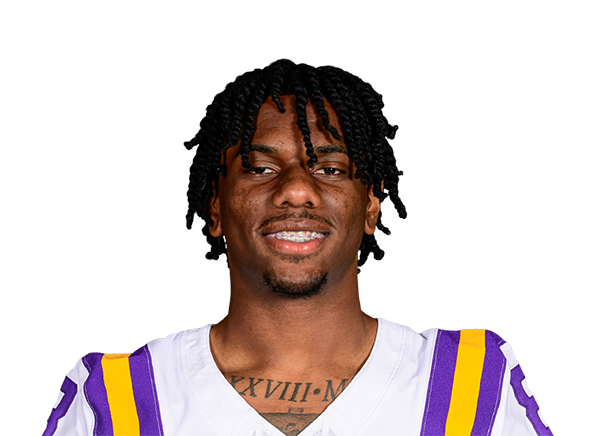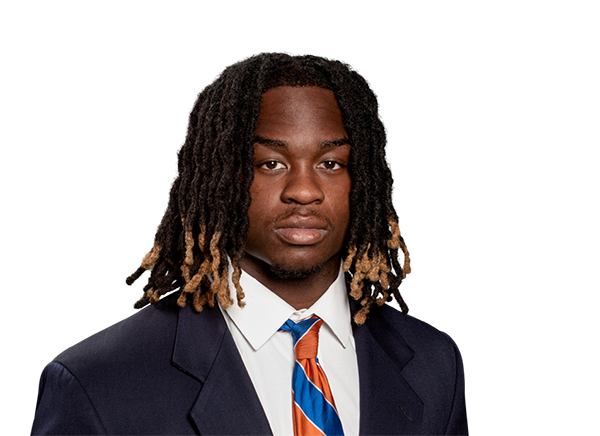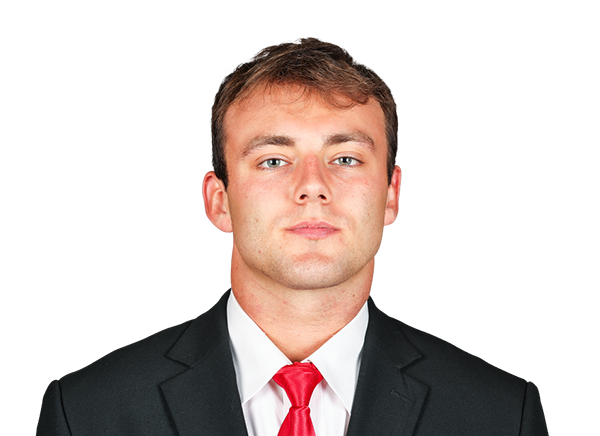As we get into Devy draft season, below are my top five devy TEs you should be looking to acquire. I’ll walk you through my process, comparing & contrasting the players on the analytical metrics of size and production. This process increases your odds of a player’s success in the NFL. Let’s get to it!
Brock Bowers, Georgia, class of 2024
.@brockbowers17 turns on the jets for the @GeorgiaFootball TD
— SEC Network (@SECNetwork) November 27, 2021pic.twitter.com/Y3ZXUCAY0J
Bowers is a 247 Sports composite four-star out of Napa, California. My Top five Devys at QB, RB, and WR have all been some variation of 1A/1B type rank, where there was a clear top tier of multiple players. At QB, that was CJ Stroud and Bryce Young. At RB, that was Bijan Robinson and TreVeyon Henderson. And at WR, that was Kayshon Boutte, Jaxson Smith-Njigba, and Quentin Johnston.
At TE, it’s Bowers in a tier by himself. He was a true standout freshman last year with elite production at the TE position. He quickly became the consensus Devy TE1. My general rule in Devy is to avoid the TE position in favor of QB/RB/WR and especially avoid young TEs because it’s usually a low hit rate. However, Bowers is one young TE I’d be willing to take a chance on.
Michael Trigg, Ole Miss, class of 2024
Dart
— Ole Miss Football (@OleMissFB) April 23, 2022Trigg
You love to see it. pic.twitter.com/yu7EXSwNZX
Trigg is a 247 Sports composite four-star out of Tampa, Florida. In his first year, he played at USC, where he played sparingly but put up a few ‘wow’ moments. After the season, the landscape changed when Lincoln Riley decided he would move from Oklahoma to USC, and many transfers ensued. Trigg and fellow freshman QB Jaxon Dart chose to transfer from USC to play for Lane Kiffin at Ole Miss. Ole Miss became a bit of a transfer haven bringing Dart, Trigg, Zach Evans (ranked fourth in my Top Five Devy RBs), and many more. The hype around Trigg started to build even more after he balled out in the Ole Miss spring game. Trigg had seven catches for 89 yards with three touchdowns and two 2-point conversions.
Michael Mayer, Notre Dame, class of 2023
the Incredible Michael Mayer would 𝗻𝗼𝘁 be denied
— Notre Dame Football (@NDFootball) January 1, 2022#GoIrish pic.twitter.com/QlGtuX0pQ2
Mayer is a 247 Sports composite five-star out of Alexandria, Kentucky. Affectionately given the nickname ‘Baby Gronk’ by the Devy community, his play style somewhat resembles NFL standout TE Rob Gronkowski. Although from a size perspective, Mayer is 6’4″ and 250 lbs. while Rob Gronkowski is a bit bigger at 6’6″ and 265lbs. It feels as though maybe a better comparison for Mayer may be TJ Hockenson for the Detroit Lions.
I’ve also seen Mayer compared to Todd Heap on the NFL Stock Exchange podcast, which I think is another excellent comparison. Heap played TE at a Pro Bowl level for a long time in the NFL. I think Mayer has a strong chance of being a great NFL TE for a while. The issue for me is, does he become a great fantasy TE, and to me, the jury is still out on that. Like Hockenson, I guess Mayer will be a consistent backend TE1 fantasy producer. Here is a Dynasty Nerds Devy spotlight on Mayer.
Jaheim Bell, South Carolina, class of 2023
TWO CATCHES. TWO TDs FOR JAHEIM BELL
— SEC Network (@SECNetwork) December 30, 2021pic.twitter.com/ikMaMEThmK
Bell is a 247 Sports composite three-star out of Valdosta, Georgia. Bell tore his ACL his senior year of high school and tore a meniscus before his freshman year at college. Then in his sophomore year, he broke out. He averaged 17 yards per reception and was a big play waiting to happen at any moment. Also, Bell will probably be the best TE in the 2023 class regarding yards after catch (YAC). Former Oklahoma QB Spencer Rattler decided to transfer to South Carolina this year and will be Bell’s new QB. Say what you will about Rattler and his prospects, but his arm talent is one thing he does have. He’s got a cannon. The hope is that Rattler will majorly boost Bell’s production this year.
Benjamin Yurosek, Stanford, class of 2023
Yurosek is a 247 Sports composite three-star out of Bakersfield, California. He had a redshirt in year one but broke out in year two with 43 receptions for 658 yards and three touchdowns. Yurosek looks like the best receiving option for NFL hopeful QB Tanner McKee. I’m not sure how competitive Stanford will be this season, but Yurosek will likely command a significant market share of the Stanford passing game.
Yurosek was my most challenging addition to the Top 5 Devy TEs. As mentioned earlier, Bowers was in a tier of his own. It was a little tough to order Trigg, Mayer, and Bell, but that seems to be a tier two. You can order them however you want. But #5 was more brutal to rank as I felt there were many options to choose from that could be fifth, but also, no one stood out as a clear #5. Yurosek looks good on the production metrics discussed below, so he snuck into the top 5. But of the other top four, Yurosek requires the most significant leap of faith and the most risk.
Size
Unfortunately, until the NFL combine, we are at the whim of the individual school rosters for their height and weight measurements, which can be accurate, but many times are not. Here is their data on height & weight.

We are looking for players 6’3″ or taller and 245 pounds or heavier at TE. There are no requirements for BMI, just like looking at BMIs to distinguish thickness; the thicker the TE, the more durable he is. All five TEs meet the height threshold. Mayer also meets the weight threshold, so he checks the box from a size perspective.
Bowers and Trigg will only be second-year players, so there is plenty of time to add a little weight. And Yurosek certainly has the frame to add some weight before he enters the league. At 6’4″, Yurosek’s frame can support 245lbs.+, and let’s hope the guy gets there before the 2023 draft. Jaheim Bell plays a little smaller than a typical TE as he is a slot or big H-back type guy. I don’t think he will get to 245lbs., but that’s not who he is; he’s a weapon, not an in-line blocking TE.
Production
One way to measure college production as it relates to success in the NFL is via market share. Essentially how much of a team’s offense goes through a particular player. As we discussed with WRs, a player’s receiving yards per team pass attempt (RYPTPA) is one way to look at that. Another metric to look at regarding a TE’s future success in the NFL is yards per reception (YPR).
Now let’s look at some charts to see how these top five TEs compare production-wise.
Receiving yards per team pass attempt (RYPTPA)

This chart from Campus2Canton.com shows each TEs RYPTPA at each year of experience out of high school. The upward-sloping dashed line is historically what the average RYPTPA was for TEs with Top 12 fantasy NFL seasons (i.e., NFL success). So when looking at this chart, you want to see players that remain above the line throughout their careers.
Bowers has only played one year and crushed this metric; that’s why he is a consensus Devy TE1 across the board. Trigg only played his first year sparingly, so he didn’t register much production, but the outlook is for him to be a much more significant part of the Ole Miss offense this season, as shown from his performance at the Ole Miss spring game. Bell and Yurosek didn’t play much in year one but hit year two. And finally, Mayer looks excellent in commanding passing market share at Notre Dame. He was well above the line for his first two years, and I’d expect that to continue into year three.
Yards per reception (YPR)

And this is each TEs YPR at each year of experience out of high school. Again you want to see guys who stay above the line for their careers, and I like to see TEs that average around 14+ YPR over time. Everyone but Mayer is above the line. Bowers and Trigg did it their freshman years, although Trigg didn’t play much (small sample size). Bell and Yurosek didn’t record enough production to get a dot their freshman years; however, both had excellent second seasons. And for Mayer, we already know he commands a big part of the Notre Dame passing market share; however, it seems many of those receptions are shorter yardage completions.
Here’s a look at what TJ Hockenson was able to do in college vs. Mayer. Hockenson was able to stay above the line at Iowa. I’d be hoping for Mayer to jump above this line in season three, and if he does, he will close this whole in his profile.

Putting it All Together
So first off, as mentioned earlier, I generally prefer to invest in QB/RB/WRs in Devy over TEs because the hit rates on TEs are relatively low. Daniel Jeremiah says regarding TEs, “scout the traits, not the production.” And that’s primarily because, on the whole, TEs are not used much at the collegiate level, making it hard to pick who will be successful NFL TEs. Bowers looks like he will be a successful NFL TE and is in a tier by himself.
Mayer looks like a complete TE. His size is exactly what you’d want to see. He is a big part of the Notre Dame offense, and the question is does he have the big play ability (which shows up in his lower YPR metric). If everything goes according to plan, Mayer could be a backend TE1 in fantasy for a while. The question is, how valuable is that from a fantasy perspective, which is why I have Trigg ranked ahead of Mayer. Trigg hasn’t played much, but when he does, you can see the traits that could make him an elite TE in the NFL. Now that is a bit of a projection, and it may not work out that way, but if he can put it all together on the field, he could be an incredible NFL prospect.
Bell is not a traditional TE; he is an offensive weapon. The South Carolina team website describes him as a “Swiss Army Knife” who can play any position. I want to move him a little higher, but his size is holding me back. If he balls out this year, tests well, and becomes an early draft pick, Bell will probably be my TE1 in the 2023 draft class from a fantasy perspective.
Yurosek is the most considerable projection of the group. I’d love to see him get to 245lbs while maintaining his athleticism because his frame can handle it. And the incredibly athletic kid from Stanford rounds out the top 5.
Fantasy Impact
I recently got this question on Twitter from @caseycole1531, “I just read your Devy article for the DN. I’m in an SF and TE premium league and was wondering about your thoughts on Mayer and Bowers. How would you rank them amongst the NFL TEs, and what draft capital would you think I’ll have to spend in 2023/24?”
First off, thanks so much for the question, Casey. I think my thoughts on Mayer and Bowers have been well explained above. As far as 2023/24 rookie draft capital goes, here is a look back at the first TEs off the board in dynasty rookie drafts since 2016 and their respective ADPs: 2016 Hunter Henry (2.05); 2017 OJ Howard (1.09); 2018 Mike Gesicki (2.05); 2019 TJ Hockenson (1.11); 2020 Cole Kmet (3.07); 2021 Kyle Pitts (1.03); 2022 Trey McBride (2.08). If everything goes right for Mayer (gets draft capital, etc.), I can see him being in that mid-first to mid-second range. Bowers has more upside, but let’s see how the next year plays out.
Just Outside the Top 5 Devy TEs in Alphabetical Order
Oscar Delp, Georgia
Arik Gilbert, Georgia
Theo Johnson, PSU
Sam LaPorta, Iowa
Bryson Nesbit, UNC
Gee Scott Jr., Ohio State
Darnell Washington, Georgia

Conclusion
These are my top five Devy TEs going into the 2022 season. I think it would be a good idea to target these TEs in devy leagues because they all have a decent probability of success in the NFL. Your top five may be different, but examining size and production gives you a clearer idea of what to look for in a devy TEs.
If you are interested in learning more about Dynasty/Devy fantasy football, please follow along on Twitter @_jasonstein and let me know what questions you have and how I can help.
Get the Dynasty Nerds app in the Apple and Google Play stores. Mock drafts for Superflex, 1QB, and Standard. If you are a DynastyGM subscriber, it even syncs with your actual teams so that you can do rookie mock drafts with ALL of your actual picks, also on desktop.



















